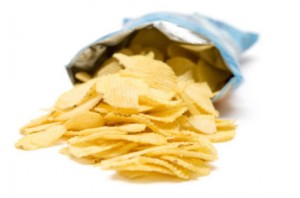 Your mouth waters and your mind wanders. You’re eating a deliciously balanced plate of grilled chicken and green beans with a whole grain roll but something is missing. You know what it is: you left the salt shaker in the kitchen. The question is, do you go and get it? Cutting salt out of your diet can be a difficult process, especially when you experience salt cravings. Cravings are a complicated phenomenon and can arise for a multitude of reasons. Understanding your salt cravings and developing strategies to combat them is one of the keys to a well-executed diet plan.
Your mouth waters and your mind wanders. You’re eating a deliciously balanced plate of grilled chicken and green beans with a whole grain roll but something is missing. You know what it is: you left the salt shaker in the kitchen. The question is, do you go and get it? Cutting salt out of your diet can be a difficult process, especially when you experience salt cravings. Cravings are a complicated phenomenon and can arise for a multitude of reasons. Understanding your salt cravings and developing strategies to combat them is one of the keys to a well-executed diet plan.
Why do we crave salt? First of all, it’s important to remember that salt is of vital importance to the proper functioning of the body. There was a point in time when salt was among the most valuable objects in the world. A salt craving can sometimes be a signal that you’re mildly dehydrated. If you have a glass of water before indulging in your salt craving, you may find that you’re simply thirsty. In most cases, cravings are experienced because a person is accustomed to a heavily salted diet. In these situations, the cure is a matter of adjusting to the taste of foods with less salt. Consider consulting a physician if your craving is accompanied by excessive thirst, dry mouth or dizziness. Sometimes a salt craving can indicate severe dehydration, complex electrolyte imbalances, Addison’s disease or certain adrenal diseases.
The 2025 Dietary Guidelines recommend 1,500 – 2,300 mg of sodium a day. The average American consumes 3,800 mg of sodium each day. That’s quite a jump in numbers. Too much salt in your diet can cause fluid retention, excessive thirst, kidney disease and high blood pressure, which is a significant risk factor for heart attack and stroke. Do your best to reduce the amount of sodium in your diet- avoid processed foods, purchase low-salt (or no-salt!) alternatives and read the nutritional labels of everything you eat.
There are acceptable ways to alleviate your salt cravings without adding excess sodium to your diet, including:
- Herbs and Spices Sometimes we are actually craving flavor and using plenty of herbs and spices when we cook is a good way to achieve the same desired effect. Americans have a tendency to depend on salt as our main source of flavoring. Nourish your inner foodie and explore the world of herbs and spices because they also bring a wide array of nutritional value to the table!
- Keep Your Taste Buds Busy The height of a salt craving would be a good time to try something new. Serve yourself small portions of different flavors and textures. Eat slowly and take some time to focus on the smells and colors as well. The stimulation may be enough to satiate you without adding excessive amounts of salt.
- Stay Hydrated Dehydration is only made worse by the indulgence of a salty craving. Do yourself a favor and reach for a tall glass of water instead of your favorite salty snack.
- Use Salt Alternatives There are a few on the market, but Heinz uses AlsoSalt in it’s sodium-free ketchup. AlsoSalt is sodium-free and available in shakers and packets for home use.
- Balance Your Electrolytes Try eating a banana or drinking some coconut water. A little bit may provide the sodium-fix that you need.
For more information and ways to reduce sodium in your diet, please visit:
Dietary Guidelines Address Heart Health Just in Time for American Heart Month
